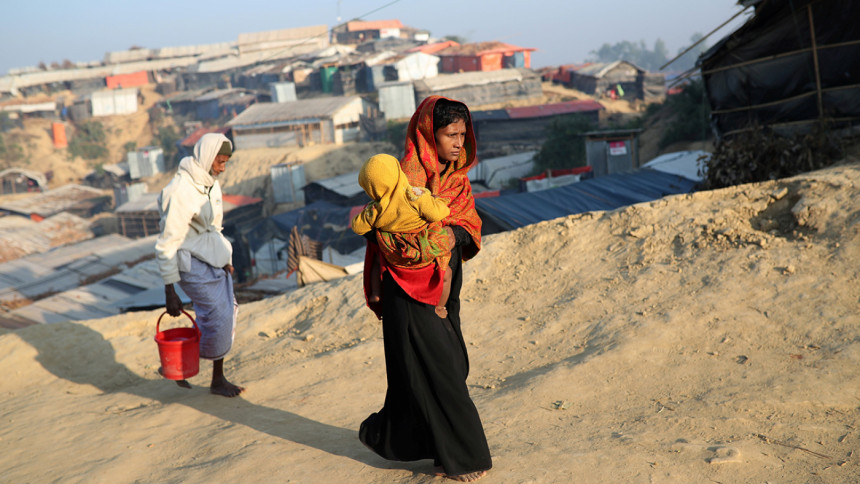25 ERTs formed to protect Rohingyas from elephants

The UN High Commissioner for Refugees (UNHCR) has formed 25 Elephant Response Teams (ERTs), each made up of 10 Rohingya volunteers, as part of its plan to reduce incidents involving elephants coming into conflict with refugees in the world's largest refugee settlement.
They are being equipped with whistles, torches, and loudspeakers and will work from bamboo watch-towers being established around the refugeesettlement to help guard the site, said the UNHCR.
UNHCR, the UN Refugee Agency is partnering with the International Union for Conservation of Nature (IUCN) in Bangladesh to reduce elephants' deaths in the refugee settlement.
Since the Rohingya refugee influx into Bangladesh started, there have been at least 10 deaths resulting from human-elephant incidents in the main Kutupalong-Balukhali refugee settlement.
The highly congested refugee site, which houses around 570,000 refugees who fled Myanmar, used to be forest land but is now crowded with tens of thousands of refugee shelters and services, it said.
The site lies along one of Asian elephants' main migratory routes between Myanmar and Bangladesh.
Asian elephants are a critically endangered species in Bangladesh, thought to number just 268, said the UNHCR.
Elephant routes and corridors will be clearly marked, so that people will know which areas to avoid.
As part of the plan, awareness campaigns will also be carried out to create better awareness of the risks.
Training of the ERTs has begun, as has work to build the first watchtowers.
IUCN plans a "live demonstration" eventon SaturdayandSunday(April 7 and 8) with the community in Kutupalong, Cox's Bazar District.
They have engaged with a Bangladeshi artist, Shadhin, who is building a model of an elephant, working with members of the refugee community, including children.
The elephant will be used in a demonstration showing people what should be done if elephantsenter the camp.
The demonstration will be interactive and an opportunity to demystify theperception on the elephant as an enemy, noting that they were part of the landscape long before the refugee settlement was established.
The message will be of the need for peaceful co-existence.


 For all latest news, follow The Daily Star's Google News channel.
For all latest news, follow The Daily Star's Google News channel. 



Comments